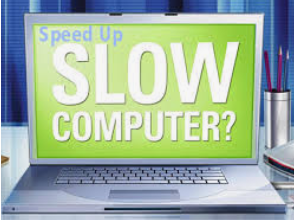How to Make Your Laptop Faster
There are several ways to make your laptop run faster and more efficiently, whether it’s a Windows laptop or a MacBook. Here are some general tips and strategies to improve your laptop’s performance:
For Windows Laptops: Uninstall Unnecessary Programs: Go to the “Control Panel” > “Programs” > “Uninstall a Program” and remove any applications you no longer need or use.
Manage Startup Programs: Disable unnecessary startup programs to reduce boot time. You can do this through the “Task Manager” (Ctrl + Shift + Esc) in the “Startup” tab.
Scan for Malware and Viruses: Perform a full system scan using a reputable antivirus and antimalware program to ensure your laptop is free from malicious software.
Clean Up Disk Space: Use the built-in “Disk Cleanup” tool to remove temporary files, cache, and unnecessary system files. You can access it by searching for “Disk Cleanup” in the Start menu.
Upgrade RAM: If your laptop allows it, upgrading the RAM can significantly improve performance, especially if you frequently use memory-intensive applications.
Upgrade to SSD: Replacing your laptop’s traditional hard drive with a solid-state drive (SSD) can result in a substantial speed boost. SSDs are much faster than HDDs and can improve boot times and application load times.
Update Drivers: Keep your drivers up to date, especially graphics and chipset drivers. You can often find driver updates on the manufacturer’s website or through Windows Update.
Adjust Power Settings: In the “Power & sleep settings,” choose a power plan that balances performance and energy conservation. The “High Performance” plan can provide a performance boost.
Adjust Visual Effects: Reduce the visual effects and animations in Windows by going to “System” > “Advanced system settings” > “Performance Settings” and selecting “Adjust for best performance” or customizing visual effects.
Upgrade to a Newer Operating System: If your laptop is running an outdated version of Windows, consider upgrading to a newer one to benefit from performance improvements and security updates.
For MacBook (macOS) Laptops:
Update macOS: Make sure you’re running the latest version of macOS, as updates often include performance enhancements and bug fixes.
Manage Startup Items: Review and disable unnecessary login items in “System Preferences” > “Users & Groups” > “Login Items.”
Clean Up Disk Space: Use the built-in “Optimize Storage” feature to remove old files and clear up space on your hard drive.
Manage Extensions and Plugins: Remove or disable browser extensions and plugins that you don’t use or need.
Check Activity Monitor: Use “Activity Monitor” to identify resource-intensive processes and close any unnecessary ones.
Upgrade Hardware: If your MacBook allows, consider upgrading the RAM or replacing the hard drive with an SSD for improved performance.
Reduce Visual Effects: In “System Preferences,” go to “Accessibility” > “Display” and reduce motion and transparency effects.
Reset SMC and PRAM: Reset the System Management Controller (SMC) and Parameter RAM (PRAM) on your MacBook if you experience unusual performance issues.
Create a Backup and Reinstall macOS: As a last resort, you can create a backup and reinstall macOS to start fresh, which can resolve various performance issues.
Remember that laptop performance can also be affected by the specific software and tasks you run. Try to keep your laptop clean of unnecessary files and regularly maintain it to ensure it continues to run efficiently. Also read about Airpods Connected but No Sound
Clean up Your Hard Drive (Disk Cleanup)
One of the most common reasons for a slow laptop is a cluttered hard drive. In this chapter, we will walk you through the steps to clean up your hard drive using the built-in Windows tool, Disk Cleanup. You’ll learn how to remove temporary files, system files, and other unnecessary data that could be hogging your precious storage space.
Upgrade Your Hardware (RAM and SSD)
Sometimes, the best way to speed up your laptop is to upgrade its hardware. We’ll discuss the benefits of upgrading your RAM and replacing your traditional hard drive with a lightning-fast SSD (Solid State Drive). You’ll also find step-by-step instructions on how to perform these upgrades yourself, saving money and boosting performance.
Uninstall Unnecessary Programs and Apps
Over time, we tend to accumulate a plethora of programs and apps on our laptops, many of which we rarely use. In this chapter, we’ll guide you through the process of identifying and uninstalling unnecessary software. This will not only free up storage space but also reduce the burden on your laptop’s CPU and RAM.
Disable Startup Programs
Have you ever wondered why your laptop takes so long to boot up? The answer may lie in the number of programs that launch at startup. We’ll show you how to manage and disable these startup programs, ensuring a faster boot time and smoother overall performance. Discover more about How to Screen Record with Audio on Mac
Optimize Your Web Browsing
Slow internet browsing can make your laptop feel sluggish. In this chapter, we’ll share tips on optimizing your web browser for speed. From clearing caches to using browser extensions, you’ll learn how to make your online experience faster and more efficient.
Scan for Malware and Viruses
Malware and viruses can wreak havoc on your laptop’s performance and security. We’ll discuss the importance of regular malware and virus scans and recommend some reliable antivirus software options. You’ll also find step-by-step instructions on how to perform a thorough scan of your laptop.

Update Your Operating System and Drivers
Outdated software and drivers can lead to compatibility issues and reduced performance. We’ll explain the importance of keeping your operating system and drivers up to date and guide you through the process of updating them safely and efficiently.
Adjust Power Settings for Performance
Laptops often come with power-saving settings by default. In this chapter, we’ll show you how to adjust your laptop’s power settings to prioritize performance. This can significantly impact your laptop’s speed, especially when performing resource-intensive tasks.
Manage Your Files and Folders
A cluttered desktop and disorganized files can slow down your laptop and make it difficult to find what you need. We’ll provide tips on organizing your files and folders, as well as recommendations for effective file management tools.
Consider a Fresh Operating System Installation
If all else fails, a fresh operating system installation may be the solution to your laptop woes. We’ll guide you through the steps to back up your data and reinstall your operating system, starting with a clean slate for optimal performance.

Conclusion
By implementing the strategies outlined in this guide, you can breathe new life into your laptop and enjoy a faster, more responsive computing experience. Whether you choose to clean up your hard drive, upgrade your hardware, or optimize your software settings, these proven methods will help you make your laptop faster and more efficient. Say goodbye to frustration and hello to improved productivity and enjoyment with your newly rejuvenated laptop!
FAQs
Q1: Why is my laptop running so slowly?
A: There can be several reasons for a slow laptop, including a cluttered hard drive, insufficient RAM, too many startup programs, malware infections, and outdated software or drivers.
Q2: Can I make my laptop faster without spending money?
A: Yes, you can improve your laptop’s speed without spending money by performing tasks like cleaning up your hard drive, disabling startup programs, and optimizing your settings. However, upgrading hardware components like RAM or SSD may require an investment.
Q3: How do I clean up my laptop’s hard drive?
A: You can clean up your hard drive by using tools like Disk Cleanup on Windows or third-party software. These tools help remove temporary files, old system files, and other unnecessary data that clog up your storage space.
Q4: What is the benefit of upgrading RAM and SSD?
A: Upgrading RAM increases your laptop’s multitasking capabilities, allowing it to handle more applications simultaneously. Replacing a traditional hard drive with an SSD results in significantly faster boot times and overall system responsiveness.
Q5: How can I identify and uninstall unnecessary programs?
A: To identify and uninstall unnecessary programs, go to your computer’s Control Panel or Settings (depending on your operating system) and navigate to the “Programs” or “Apps” section. From there, you can uninstall the programs you no longer need.
